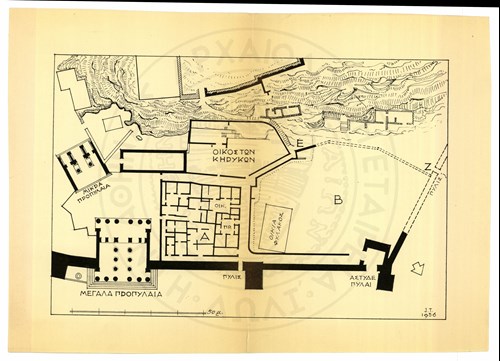Kerykes
One of the fundamental nuclei of Greek society in antiquity was the genos. This family group shares a common descent from a mythical ancestor and serves a common worship tradition. The number of gene that existed in ancient Athens is not known precisely. However, it was certainly not less than fifty, although there were significant differences in the number of their members. The strongest gene could have hundreds of adult male members, while the most insignificant may have been limited to a few dozen. Members played a leading role in the city's religious life and provided priests and priestesses for prominent ministerial positions and ceremonies. The members of the genos enjoyed social and material advantages, depending on their importance in the hierarchical scale of the Athenian gene. Descending from a powerful and widely recognised ancestor was tantamount to overwhelming advantage and opened the door to the highest religious positions.
The organisation and operation of the sanctuary of Demeter and Kore in Eleusis were in the hands of the two most powerful local gene. The Eumolpidae came from Eumolpus, the mythical king of the city, a person mentioned in the Homeric Hymn to Demeter who starred in the heroic (and semi-mythical) struggles of the Eleusinians against the Athenians. This aristocratic origin had given the Eumolpidae the right to elect the supreme religious official of the Eleusinian cult (the hierophant) and control or protect the sacred objects kept in the Anaktoron.
The Kerykes were the second most crucial genos associated with the Eleusinian Mysteries. Unlike the Eumolpidae, however, their origin was not so clear, and the name of the genos seems to be due more to a function they performed than to a mythical ancestor. Of course, the members of the genos made efforts to identify and impose a heroic origin. Pausanias records an Eleusinian tradition according to which the ancestor of the Kerykes was Keryx, the youngest son of Eumolpus. The members of the genos, on the other hand, claimed that Keryx was the son of Hermes and one of the daughters of the mythical king of Athens, Kekrops (Herse, Pandrosus and Aglaurus). In 371 BCE, Callias, a member of the genos, supported the even more extravagant theory that the genos descended from Triptolemus himself.
In general, it seems that the Kerykes were an Athenian family associated with the Eleusinian Mysteries when the sanctuary came under the control of the Athenians. Although they did not live in the city, they had the right to use a building on the sanctuary where they could hold meetings and perform certain rituals. The genos of Kerykes occupied most priestly offices, including the daduch (second in the hierarchy of male priests), the Keryx and the priest on the altar, and numerous other positions of lesser prestige.

Auxiliary area of the Sanctuary (plan), John Travlos, plan, Εν Αθήναις Αρχαιολογική Εταιρεία © Η εν Αθήναις Αρχαιολογική Εταιρεία





